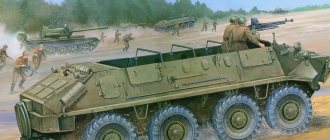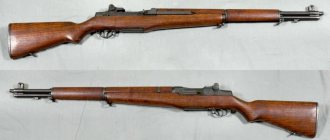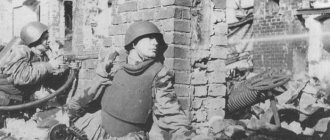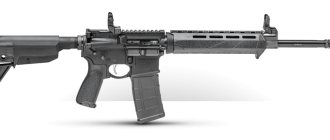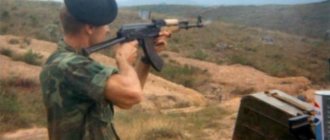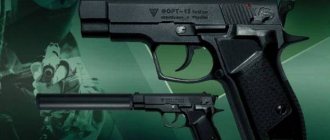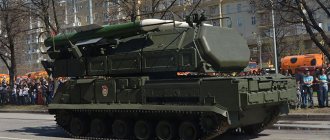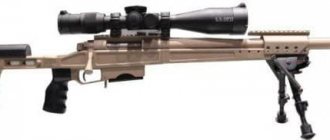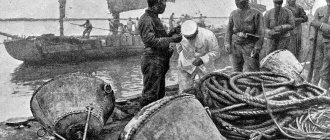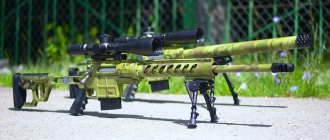Georgy Shpak initially refused the offer to become commander of the Airborne Forces. I could not forgive my relatives for the grievances they felt for their son Oleg, who died in Chechnya due to the negligence of his commanders. It was the hardest year of his life. Not a day without memories of my son, of their last meeting in Chechnya. Deputy Minister of Defense Dmitry Sukhorukov, who commanded the winged infantry for seven years after Margelov, persuaded him to join the Airborne Forces.
“There will be another war,” he said then, “the troops need your experience, think about the people...
After college, Shpak commanded a platoon of cadets for four years and a company for another three. Desperate to ask to join the troops, he decided to go to the headquarters of the Airborne Forces, and as a result became a battalion commander of a training division. And having made the battalion the best, he earned the right to the academy just in time - a year later it would have been too late. He made it. And then he showed himself so well during his studies that he was immediately promoted to regiment commander. This was the decision of the then commander of the Airborne Forces Vasily Margelov, who often promoted bright officers through the career ladder.
Their first meeting occurred when Uncle Vasya was checking the officers of the school for fire training, and Shpak, who was engaged in shooting, was specially placed next to the commander. When he fired three shots in seconds without lowering the pistol, Margelov called the lieutenant a dude, but when he saw the three tens knocked out, he immediately rewarded him with his watch. And two years later, as a company commander, Shpak again impressed the commander. He was doing exercises with a company of cadets, and suddenly - with a naked torso and a cigarette in his teeth - his dacha was nearby - the commander came up. Next is the head of the school’s rear services.
“Come on, Andryusha,” Margelov tells him, “pull yourself up on the bar.”
He couldn't. Then, turning to Shpak, Uncle Vasya, not knowing that he was doing gymnastics, provocatively suggested twirling the “sun” on the crossbar. And Captain Shpak, confidently stepping towards the crossbar, drew out the lace that amazed the commander.
- This is the company commander! – Margelov did not hide his emotions. - This is what I understand...
One parachute regiment
Pavel Grachev was reproached for a long time with his dashing promise to subdue Grozny with one airborne regiment.
Meanwhile, Kabul was taken in December 1979 in exactly this way. One parachute regiment. Regiment of Georgy Shpak. First, regimental commanders and the command of the Vitebsk airborne division were called to Moscow. We studied the maps and flew to Afghanistan under the guise of tourists. We drove around Kabul for several days, studying the area of upcoming operations. And in November 1979 they were put on alert. It was about ten o'clock in the evening. As soon as he returned from service and only had time to take off his boots, Shpak again hurried to the regiment. And he flew away for a year and a half, without even having time to say goodbye to his family.
Arriving in Kabul, we camped near the airfield. And three days later we received the command to storm. And the landing behies rushed towards the Afghan army brigade and the local General Staff. The surprise left the enemy no chance. The Afghans were driven into barracks and were not allowed into the parks with equipment. Soon the resistance, and they fired at the column and even knocked out one BMD, was suppressed. The capture of the General Staff was also successful. Having blocked the building, we took up defensive positions. Fire from small arms was responded to by fire from combat vehicles.
After the operation, they promised to send the division home, but they were detained in Afghanistan for ten long years.
Commanders of the "winged infantry" of the USSR
During the existence of the Airborne Forces, the command of this special branch of troops was entrusted to fifteen commanders.
The list of commanders opens with General Vasily Vasilyevich Glagolev - in 1946 he headed a new branch of the military in the USSR.
Since October 1947, after the sudden death of V.V. Glagolev, Alexander Fedorovich Kazankin is appointed commander.
For less than a year (end of 1948 - September 1949), the airborne troops were under the command of Sergei Ignatievich Rudenko, air marshal.
General Gorbatov A.V. commanded the Airborne Forces from 1950 to 1954.
The legendary man V. F. Margelov led the airborne paratroopers for more than 20 years (1954 - January 1979).
In subsequent years, the commanders of the USSR Airborne Forces held their posts for a maximum of a year or two, with the exception of D.S. Sukhorukov:
- Tutarinov I.V. (1959 - 1961);
- Sukhorukov D.S. (1979 – 1987);
- Kalinin N.V. (1987 - early 1989);
- Achalov V. A. (1989 – 1990);
- Grachev P. S. (January - August 1991);
Podkolzin E.N. became the last commander of the “winged infantry” of the USSR and the first of Russia (August 1991 – November 1996).
In the Afghan mountains
Situations not provided for in the combat regulations began from the very first exit into the mountains.
Most of the route to the province of Chakvardak, where Shpak’s regiment was sent to establish a new order, passed along mountain roads. Ambushes and two-meter snow only at first seemed to be the main obstacle. When we came across the first gulley - a ten-meter hole on a narrow mountain road, on the right - a sheer cliff, on the left - a hundred-meter cliff, it was time to despair. The militants deliberately released water onto the roads, washing away such gaps. In the photo: USSR Minister of Defense, Marshal of the Soviet Union Dmitry Ustinov, presents an award to Colonel Georgy Shpak.
It took three days to fill the hole with stones. But will the masonry withstand combat vehicles? Here's a test you won't forget. The BMD went well, but the tank... Having crossed himself, the tank captain leads the T-62 onto the rocks. It drives about five meters, and the masonry begins to slowly crumble into the abyss. The tank goes deeper and deeper, now only the trunk sticks out above the road. That's it... But the experienced tanker, without accelerating, slowly scraping his tracks over the crumbling stones, still crawls out.
Then they spent another three days restoring the masonry, cutting down the forest, and laying down the logs. And they passed!
Everything had to be figured out during the course of hostilities. The main thing that Shpak demanded from his officers was not to pay for the Afghan roller coaster with soldiers’ lives. After each combat operation, the experience was carefully summarized. To combat, for example, ambushes on mountain roads, Shpak came up with the idea of dismounting one company and sending it on foot on horseback to cover the armored group going below. Driving on mountain roads is a matter of track after track, and only after engineering reconnaissance. If the fire is from a rock, the column closes - the car fits tightly to the car, and in the gap between the rock and the column you can walk, like in a trench. Barrels towards the enemy and fire at the greenery. We learned to climb mountains using ropes with knots. They immediately realized that you couldn’t fight much in the mountains wearing boots. Without waiting for the problem to be solved at the top, Shpak solved it himself. They slaughtered pigs in the regimental subsidiary farm that remained in Belarus and bought sneakers and woolen socks with the money raised. In order for the units to be more manageable and not to lose anyone wounded in the heat of battle, platoons began to be divided into combat twos and threes. One was wounded - the second one carries him out. In short, many of the tactical ideas of the commander of the famous 350th regiment, Colonel Shpak, were then used for a long time not only in Afghanistan, but also in Chechnya.
For Afghanistan, Shpak was nominated for the Hero Star, but at that time “Heroes” were given only posthumously. Therefore, the Order of the Red Banner became a memory of the Afghan roads and fallen friends. The most expensive reward.
With death in dispute
The gap made by the dushmans under the asphalt while the column was stopping turned out to be exactly under his car.
And when, upon resuming movement, Shpak’s commander’s “magpie” dived into a deep hole, he only miraculously did not fall out of it, managing to hold on to the handle of the open hatch. The car flopped upside down into the liquid mud. Everyone groaned.
- Be silent! - Shpak stopped the panic. “Whoever raises a voice, I’ll shoot without warning.”
Silence. It's dark, you can't see anything. You just feel the dirt slowly creeping inside.
“Stop the engine,” he commands the mechanic.
He doesn’t find the button for a long time, but eventually turns off the engine.
“Try to open the hatch,” Shpak says to the signalmen.
The hatch can be opened slightly, but it is impossible to crawl through it.
People gathered around the overturned car argue loudly, unable to find a solution.
“Lower the GAZ-66 with a winch, hook it to the track and turn the car over,” Shpak commands.
It doesn’t work - the cable breaks.
“Then dig a trench and scoop out the dirt with buckets,” Shpak finds another solution.
Happened! Five hours later, it was already possible to pull the stunned soldiers out into one of the hatches. According to unwritten command laws, Shpak was the last to leave the emergency vehicle.
And when he returned from the war, he learned that they had rushed to bury him...
When, having barely arrived from Afghanistan, he went to Kaunas to visit an old friend, the chief of logistics of the 7th division, he led him to a banquet hall with a table set for fifty people.
- Will friends come? – Shpak asked.
“No,” the friend answered, seating him at one end of the table and sitting down at the other. “It’ll just be the two of us.”
It turns out that when news of his death came from Afghanistan, he, having invited fifty colleagues, held a wake for him at this very table.
From Kaunas to Turkestan
Serving as deputy commander of the 7th Airborne Division stationed in Kaunas was remembered for the large-scale exercises “Zapad-81” and work with the commander of the formation, Vladislav Achalov.
Then there were three years of command of the 76th (Pskov) division. Having established a system of social competition, in which those who achieved objectively the best indicators grew faster than others, Shpak appointed to positions those who wanted and knew how to work, regardless of age, rank and career history. Fortunately, the commander of the Airborne Forces, Dmitry Sukhorukov, who knew him from Afghanistan, supported the young division commander in all his endeavors. As a result, the division soon became the best.
After the Academy of the General Staff, Shpak became deputy commander of the 14th Army, and then commander of the 6th Combined Arms Army with headquarters in Petrozavodsk. The scale of the inherited economy was impressive: 1,500 km along the front, 500 in depth. Managing such a colossus, I had to spend a week a month in each division. He was hardly seen at home during that period, but the new service taught him to think like a statesman. And new appointments were not long in coming: first he was appointed chief of staff of the Turkestan Military District, and then transferred to a similar position in the PriVO.
New branch of the military
The first airborne unit was formed in the USSR in 1931. In December 1932, the Revolutionary Military Council, by its Resolution, introduced airborne units. The massive deployment of units of a new type of troops began, the motto of which in the future will be “Nobody but us.”
Initially, airborne units were part of the structure of the Red Army Air Force, but on June 3, 1946, by decree of the USSR government, the Airborne Forces were transferred to the personal subordination of the Minister of the Armed Forces (AF) of the USSR. In connection with this, a staff unit of the commander of this type of troops was introduced.
The commanders of the Airborne Forces of the USSR and the Russian Federation, each in their time, contributed, some more, some less, to the development of their troops.
An experience paid for in blood
Flying around the district's troops, Shpak met commanders, heads of regions and republics, and studied the situation on the ground.
There was a massive redeployment of units from near and far abroad to the district. Due to the problems of their placement and arrangement, combat training somehow quietly faded into the background. And although its organization was not part of the direct responsibilities of the NS district, at the end of 1994 it forced him to forget about all other matters. The first Chechnya fell out of the blue. At the beginning of December, the 81st motorized rifle regiment of the PriVO arrived in Mozdok. Understanding well that the personnel were not ready for war, Shpak, the commander of the district troops and a group of officers flew to Mozdok. For more than ten days, Shpak personally taught the soldiers how to shoot from an armored personnel carrier, equip belts, go on the attack and hold the defense. There was no time to figure out whose fault it was that the soldiers were not taught even basic things.
On New Year's Eve, a group of PriVO officers were asked to go home. Having learned how the 81st Regiment and the 131st Brigade, having entered the city in marching columns, fell into a stone bag and suffered catastrophic losses, Shpak could not find a place for himself. Then he did not yet know what loss lay ahead of him. On March 29, 1995, his son Oleg died. Lieutenant paratrooper. Commander of a parachute platoon.
Uncle Vasya's troops
This is how the abbreviation Airborne Forces was deciphered during the period when the “winged infantry” was commanded by Vasily Filippovich Margelov, a legend of the USSR Armed Forces.
Commander of the USSR Airborne Forces Margelov V.F. was born on January 9, 1908 in Yekaterinoslavl (now Dnepropetrovsk). In 1928, on a Komsomol ticket, Margelov was sent to a military school in Minsk, from which he graduated with honors in 1931. During the Soviet-Finnish war, a young officer shows military valor.
Margelov met the attack of Nazi Germany as commander of an infantry regiment, and since 1944 he was entrusted with the 49th Infantry Division of the 28th Army of the 3rd Ukrainian Front.
For skillful leadership of the entrusted units during the crossing of the Dnieper, divisional commander Margelov receives a Hero's star.
After the Victory, he studied at the VA General Staff of the USSR Armed Forces named after. Voroshilov, upon graduation commands a division. Then there was the Far East, where Margelov was entrusted with the corps.
From 1954 to 1979 (with a break in 1959 - 1961) Margelov commanded the Airborne Forces. In this position, “Suvorov of the 20th century” proved himself to be a remarkable organizer: thanks to him, the “blue berets” became a formidable striking force that had no equal.
Margelov's stern character was organically combined with his father's warmth towards his subordinates. Taking care of people was the commander's priority. Theft was punished mercilessly. Combat training was combined with the training of soldiers and officers. For this, the paratroopers called Margelov “father.”
It was during his tenure as commander of the Airborne Forces in 1973 that it became possible for the first time to land armored vehicles with a crew inside.
Margelov V.F. died on March 4, 1990. His grave is located at the Novodevichy cemetery.
The Ryazan Higher Command School of the Airborne Forces was named after Margelov. In Ryazan, St. Petersburg, Pskov and many other cities, the memory of “Paratrooper No. 1” is immortalized in the names of streets, squares, and monuments.
Son
He and his wife did not have children for a long time.
Then Oleg was born, two years later - daughter Elena. Military guests, military conversations - Oleg knew from childhood who he would be. Only as a paratrooper. While studying at the General Staff Academy - the son was then a student in the ninth and tenth grades - they ran three kilometers together every morning, practiced on the uneven bars and horizontal bar. And when Oleg entered the Ryazan Airborne School, he did not have the problems with physical training that most cadets experience. But there were other problems.
“It’s hard for me, dad,” Oleg once admitted, “they don’t like me because I’m a general’s son.”
“Well done, son, for what you said,” answered the father.
Arriving at Oleg’s company, Shpak asked to seat the personnel so that he could speak to the cadets. Introduced himself: Army Commander, Lieutenant General Shpak Georgy Ivanovich. And he told how he himself studied at this school, how hard the physical activity was, how difficult the friendship was, but if as freshmen they sometimes even fought, then by the fourth year they became like brothers. Then he told how he himself commanded a platoon and company at the school, how they took Kabul, how they were the first to fight in the mountains. And about how difficult it was for the family that changed garrison after garrison.
“And now, comrade cadets,” said the 47-year-old lieutenant general, taking off his jacket and approaching the crossbar, “I will show you three exercises.” Whoever manages to repeat it will go on vacation for ten days today, I will resolve the issue with the head of the school - the word of the general.
The company exploded with delight.
When Shpak showed on the horizontal bar and uneven bars exercises at the level of a candidate for master of sports in gymnastics, and then walked about ten meters on his hands around the barracks, the company fell silent. One daredevil tried to imitate something on the uneven bars, but fell to the laughter of his comrades.
- This, friends, is what normal men should do. Now imagine what kind of platoon and company commander I was,” Shpak summed up, shook the company commander’s hand and left.
Oleg no longer had problems with his comrades. And a real gymnastic mania began at the school - cadets of all courses began to practice the exercises shown by the army commander.
In the photo: Georgy Ivanovich with his son.
Shpak very closely followed his son’s development as an officer, constantly inquired about his service with the regiment commander, and gave Oleg advice.
In January 1995, when Oleg was in the hospital with a sore knee and ulcer, his battalion began to prepare for Chechnya. Leaving a receipt for voluntary refusal of treatment, Oleg left the hospital to go with everyone.
“I had no doubt that you would do so,” said Georgy Shpak, saying goodbye to his son.
For an hour, he advised Oleg on how to be in war: do not be shy about wearing a bulletproof vest and a helmet, go along unfamiliar roads only after mine reconnaissance, caterpillar to caterpillar, and in order to immediately grow into the situation - ask your son-in-law about everything - also Oleg, whose battalion in Chechnya I changed my son’s battalion.
On March 15, Georgy Shpak flew in to check on the district units fighting in Chechnya. When he stopped by to see his son, whose company stronghold was located south of Komsomolskoye, Oleg, as his father had ordered, met him in a bulletproof vest and helmet. First of all, Shpak meticulously examined his son’s stronghold. The width, depth, location of fire weapons, the dugout with logs in three rolls - everything was military competent, which made Oleg very happy. Then he asked his son to leave for three days, and during his entire business trip they traveled around Chechnya together.
And two weeks later Oleg died.
Having arrived in Chechnya and having understood the circumstances of his son’s death, Shpak expressed many strong words to the officers, because of whose unprofessionalism his son died. But Oleg could not be returned...
He himself was brought back to life by Sukhorukov’s words about a new war and possible losses. As a result, in December 1996, Lieutenant General Georgy Shpak accepted the post of commander of the Airborne Forces.
Commanders of the Russian Blue Berets
With the formation of the Russian Federation, there has been a certain stability in the leadership of the Airborne Forces: commanders hold their positions for a longer period of time, which indicates the seriousness of personnel selection in the country’s Ministry of Defense.
For the last quarter of a century, the Russian Airborne Forces have been under the command of generals:
- Evgeniy Nikolaevich Podkolzin (September 1991 – December 1996);
- Shpak Georgy Ivanovich (December 1996 – September 2003);
- Evtukhovich Valery Evgenievich (November 2007 - May 2009);
- Shamanov Vladimir Anatolyevich (May 2009 – present);
And again the war
Many people probably remember the raid of paratroopers from Bosnia to Pristina in June 1999, which discouraged NATO members.
However, what remained behind the scenes was the fact that this sensational forced march became possible thanks to the political foresight of the Airborne Forces commander, Colonel-General Georgy Shpak, who began preparations for the operation a week before the political decision. About the same thing happened two months later. Having learned about the invasion of militants in Dagestan, Shpak immediately, by his decision, led the battalion of paratroopers temporarily located near the Caspian Sea “to battle.” And when, despite the abundance of motorized rifle units in the region, this particular battalion of Novorossiysk paratroopers was sent to meet the militants, they, having marched to Botlikh, were several hours ahead of Basayev and Khattab, preventing the militants from transferring the war to Dagestan. Having become commander, Shpak intensified combat training and, even before the appearance of permanent readiness units, created in each parachute regiment the so-called first-line battalions - units that were ready for combat use at any time. Well, when the war began, high-quality training of regimental tactical groups leaving for Chechnya was immediately identified as a priority task for the Airborne Forces.
He himself visited the combat zone 16 times.
In September 1999, on the way to Khasavyurt, where the Airborne Forces group was then stationed, the commander was informed of a radio interception: the militants were preparing an attack on him. But he refused to be persuaded to go to Khasavyurt at least every other day. Postponing the commander's visit due to the threat of attack, he said, would inevitably undermine the fighting spirit of the troops. But he came to raise it!
And when, at the height of the battles near Botlikh, the generals from the command of the North Caucasus Military District strongly pressed the commander of the 7th Airborne Division, General Yuri Krivosheev, forcing him to quickly take the hills occupied by the militants, Shpak, on the contrary, assured him that he would not give offense, strictly demanded to take care of people and do not rush to carry out bad orders.
“Demand air and artillery support,” he directed Krivosheev from his office, while the operators of the Airborne Forces command plotted the latest changes in the combat situation on the map.
Shpak often helped his officers in the development of combat operations. Like, for example, during the blockade of Gudermes, when he and the commander of the airborne assault regiment, Colonel Yuri Em, came up with the idea of luring the militants out by simulating an attack on the outskirts of the city and inflicting a massive artillery strike on them.
Shpak’s great merit, according to the officers, is that after the events in Dagestan he was able to convince the Minister of Defense that the use of his troops by a single group led by its airborne commander would not only reduce losses, but would also make the combat use of airborne units especially effective.
The death of the 6th company of Pskov paratroopers lay a heavy scar on the commander’s heart. Shpak was not afraid and did not avoid meeting the relatives of the victims. On the contrary, I tried my best to support them. He, the general who lost his son, probably understood their grief more than anyone else. Paratroopers don’t die, he told them, they fly away and don’t return. How once his Oleg did not return...
